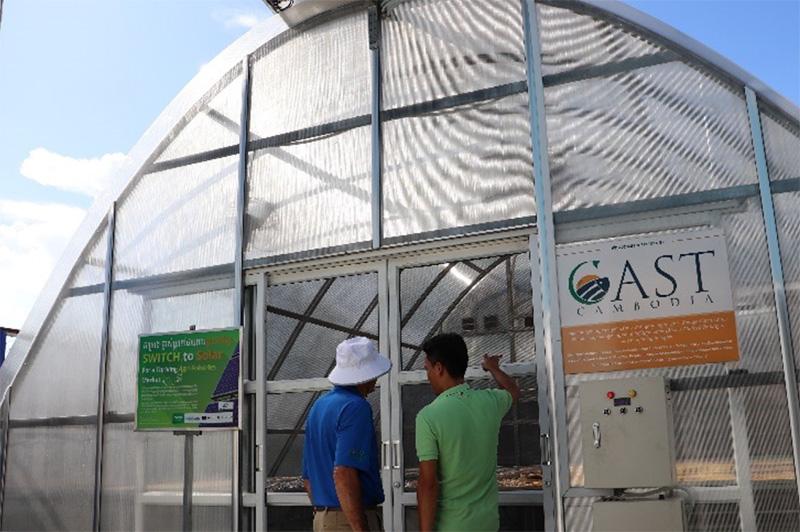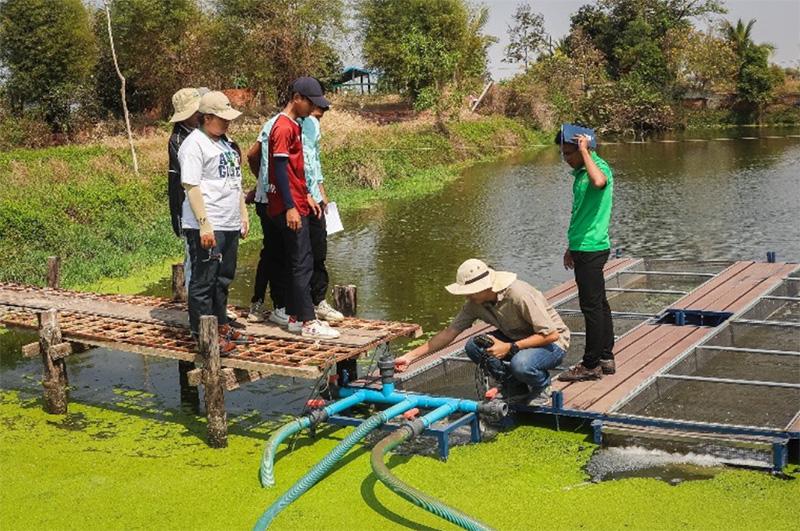
Food for Progress Success Story: Cambodia

The USDA Food for Progress Project in Cambodia is implemented by the American Soybean Association’s World Initiative for Soy in Human Health (WISHH). The project is assisting the freshwater aquaculture industry in Cambodia while simultaneously creating long-term trade relationships for U.S. soybean growers. Launched in FY 2018, the project named Commercialization of Aquaculture for Sustainable Trade (CAST) Cambodia includes a cooperative effort between WISHH, World Vision International, Kansas State University and Auburn University. These organizations work closely with the Cambodian government, which has prioritized the growth of aquaculture in the country where fish provides more than 80 percent of the consumed protein. The Food for Progress project aims to overcome key challenges faced by Cambodian fish farmers such as the availability of “seed stock” fish, ranging from the hatchling to juvenile stage, and the use of quality feeds made with soybean meal.

The Food for Progress project strengthened the links in the value chain from hatcheries to fish producers to buyers, processors, and distributors. Cambodia benefits from greater access to high-quality Cambodian-grown fish, which are produced and handled with proper standards. The project enables Cambodia to join a global market as a consumer of soy protein and supplier of locally raised, high-quality freshwater aquaculture products. WISHH is further leveraging the Food for Progress project by using soy checkoff funding to support training, as well as innovations in new technologies for aquaculture.
From 2019 to 2023 the project trained and coached 1,042 producers and producer groups to increase their yield and income. The project also provided follow-up technical support to approximately 1,500 people and their organizations and established relationships with buyers. The Food for Progress project has a robust business development program, training entrepreneurs who buy fresh or processed fish to sell in management, accounting, enterprise planning, and other management skills. The project trained 247 enterprises, of which 86 are women-led.

With an eye toward sustainability of the Food for Progress investment, the project has worked with the Center of Excellence in Sustainable Agricultural Intensification and Nutrition at the Royal University of Agriculture. This innovative unit is also supported by U.S. Agency for International Development (USAID) Innovation Labs and other development programs. It has conducted applied research in aquaculture, carried out internship programs for aquaculture students, and managed demonstration ponds. As a result, there are significantly more undergrads signing up for the aquaculture program, and the university is committing to expand the faculty.
Another component of ongoing industry strengthening is the launch of the Cambodian Aquaculturist Association (CAA), a locally registered, Cambodian-led organization with members who lead businesses spanning the aquaculture value chain, from hatcheries to feed mills to fish processors. As of 2023, CAA has 1,000 members, and 75 percent are producers. CAA also provides a strong foundation for ongoing trade relationships with the U.S. soybean industry. The organization is working on a three -year strategic plan, which will guide it beyond the project closeout in 2026.
